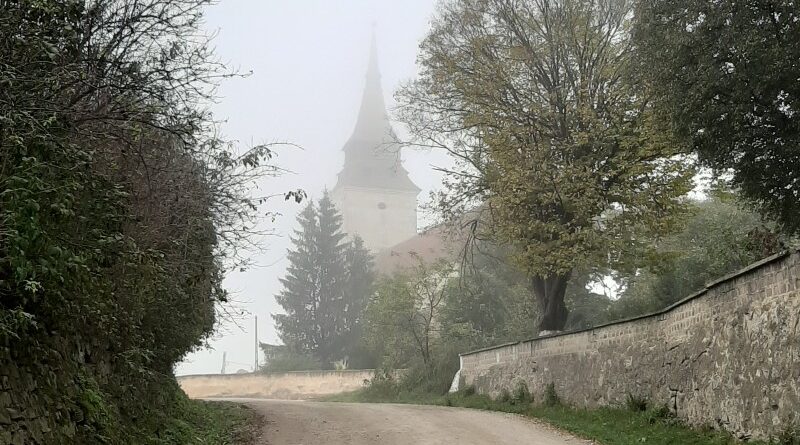The Fortified Church of Feldioara (Marienburg), Brasov County
In this trip report, we visit the Saxon fortified church of Feldioara (Marienburg) in Brașov County, Romania.
To the north
If you drive north from Brașov towards Sighișoara on the DN13, the first sizeable town you will hit is Feldioara.
You can’t really miss Feldioara as the town occupies a strategic position on top of a hill.
From Brasov, the road to Feldioara is rather straight, running on flat terrain.
But as you approach the village after some 20 kilometres, the straight road abruptly gives way to a sharp turn left as it twists up on a small hill.
From the main road below, you can clearly make out a small church on top of the hill.
It is not the the big Saxon fortified church of Feldioara, but rather the small Orthodox church of Sfântul Ioan Botezătorul.



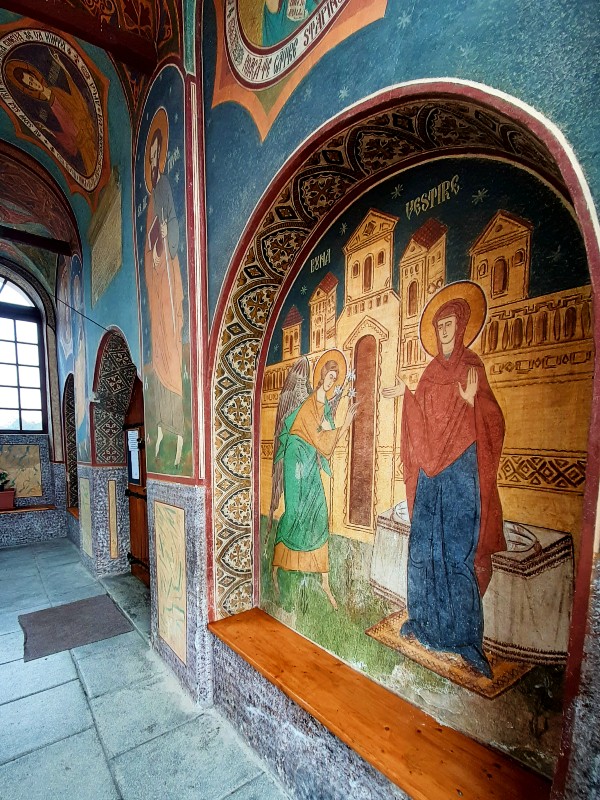
Marienburg
Feldioara is a rather small town of around 6,000 souls and you can easily visit all the sights in an hour.
You are best off parking your car on Strada Octavian Goga in the heart of town, as from here everything is just a short distance walking away.
Despite its small size, Feldioara does have two Medieval sights worth seeing.
The town, known as Marienburg in German and Földvár in Hungarian, has both a Saxon fortified church and a fortress.
If you walk from the town centre to the east, you will first pass by the fortified church on your left-hand side.
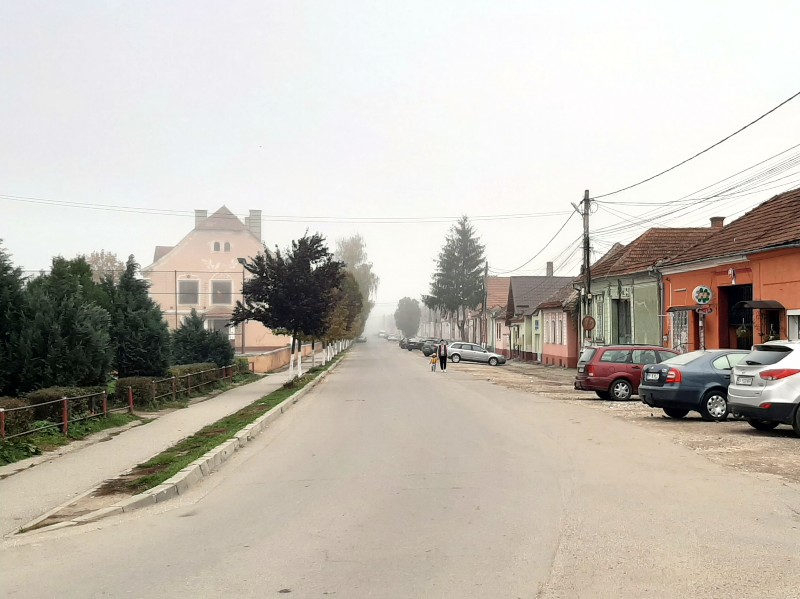


Feldioara fortified church
Just like the nearby fortified churches of Harman and Prejmer, also the Saxon fortified church of Feldioara was also built by the Teutonic Knights who were invited to settle these lands around Brasov.
Feldioara itself was located on a strategic position guarding the road north towards Sighișoara (Schässburg).
Due to its hilltop location a couple of metres higher than the surrounding area, it made for a natural sport to construct some fortifications.
Compared to the two previous fortified churches I visited, the walls did not seem particularly impressive, although the giant church tower for sure did.
Built in the early 13th Century, the Romanesque basilica towers above the walls and the rest of the village.
Unfortunately, the doors were firmly shut when I visited and I couldn’t find the phone number of the keyholder.

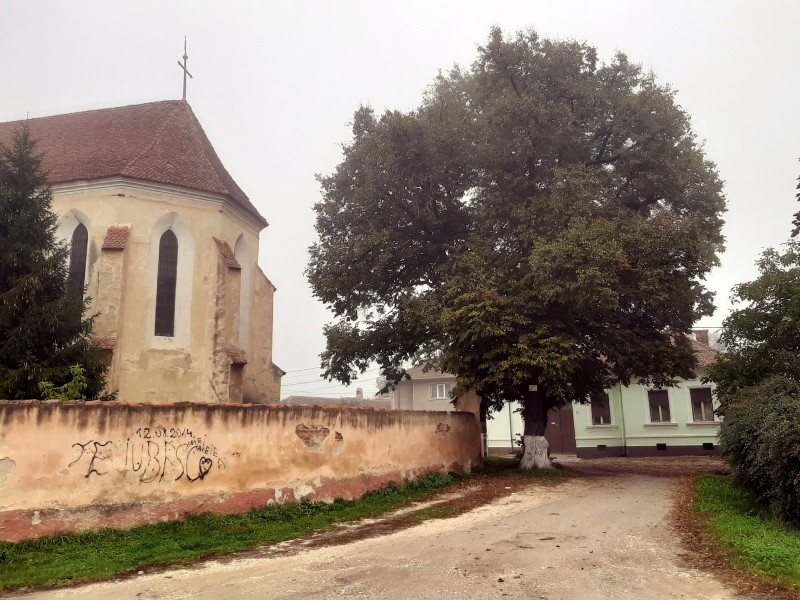

Fortress
The church isn’t the only fortified building in town as just a few hundred metres away the Teutonic Knights also constructed an entire fortress together with the locals of Feldioara.
Marienburg, the German name of the town, refers to this fortress as it literally means “Fortress of (the Virgin) Mary”.
By sheltering inside the fortress, the locals managed to withstand attacks from the Ottomans in the 15th Century, although in 1612 a Hungarian army commanded by Prince Gabriel Báthori managed to besiege the fortress as they defeated a Transylvanian Saxon army led by Brasov’s mayor Michael Weiss, who was captured and beheaded.
In the years which followed, the fortress no longer served any purpose and it was used as a granary by the locals.
The fortress sustained massive damage in an earthquake and was afterwards left in a ruined state for many years.
In 2013, the municipality of Feldioara and the County of Brasov however decided to rebuild the fortress walls and to make a tourist object out of it.

Visiting the fortress
In front of the fortress there is a small prefab building where you need to buy your entrance ticket (15 RON, around 3 EUR). When I arrived, I was the only visitor.
The kind, welcoming girl at the ticket office handed me a leaflet about the site and wished me a nice day, seemingly happy that someone made the effort to visit on this foggy autumn day.
Due to Feldioara’s hilltop position there would normally be great views over the surrounding area from the entrance ramp and castle walls, although the fog prevented any panoramic vista.
That said, it did create a special vibe with the farms and fields around the fortress being blanketed by the morning mist.
Although the restauration team did a fine effort reconstructing Feldioara’s fortress, I personally felt that they did their job a bit too well.
The approach to the castle looked great, but once inside it all felt rather modern and fake to me.
It was almost like you were standing inside a castle in a theme park instead of a historic monument, it all just looked a bit too perfect!
There isn’t a great deal to see inside the fortress either. You can climb on one rampart and into one tower, and there is one small room in which some unimpressive exhibits are shown.
From the rampart you can however clearly see the foundations of the church which once stood in the middle of Feldioara fortress.
Although I was happy I visited the fortress and the 3 euro entrance fee did not break the bank, I have to say that Feldioara is more style than substance and there are many other fortresses and castle ruins in Romania which I think make for a much better visit.

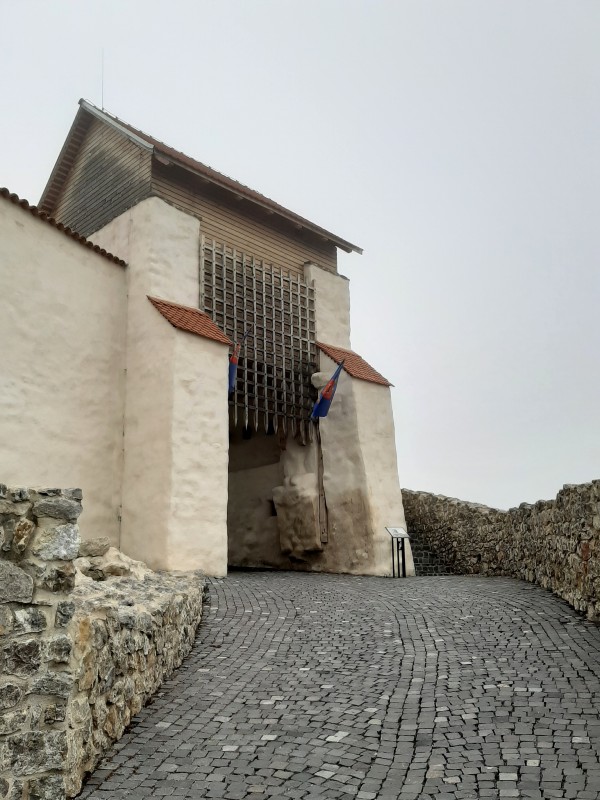

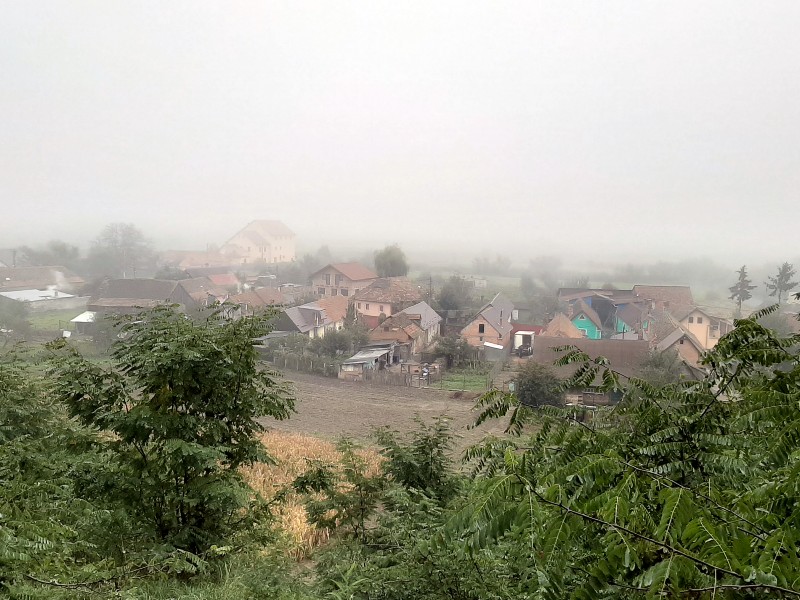
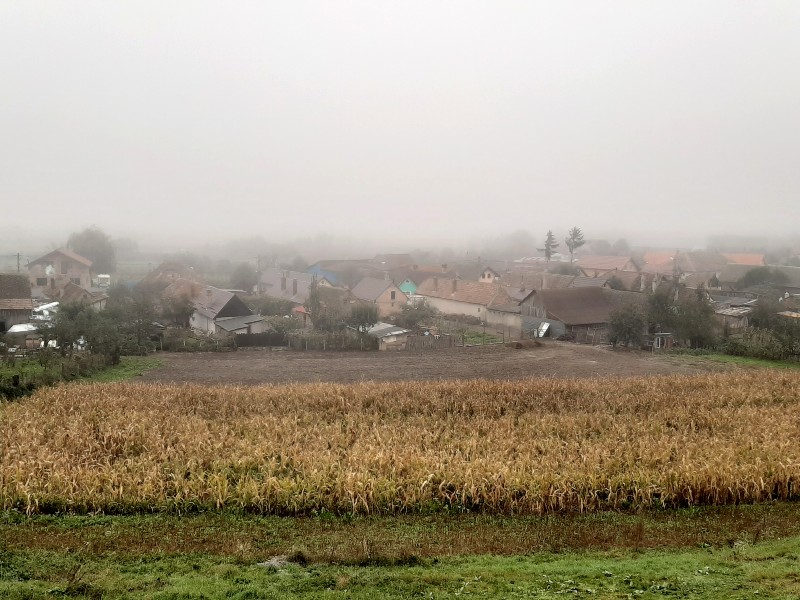
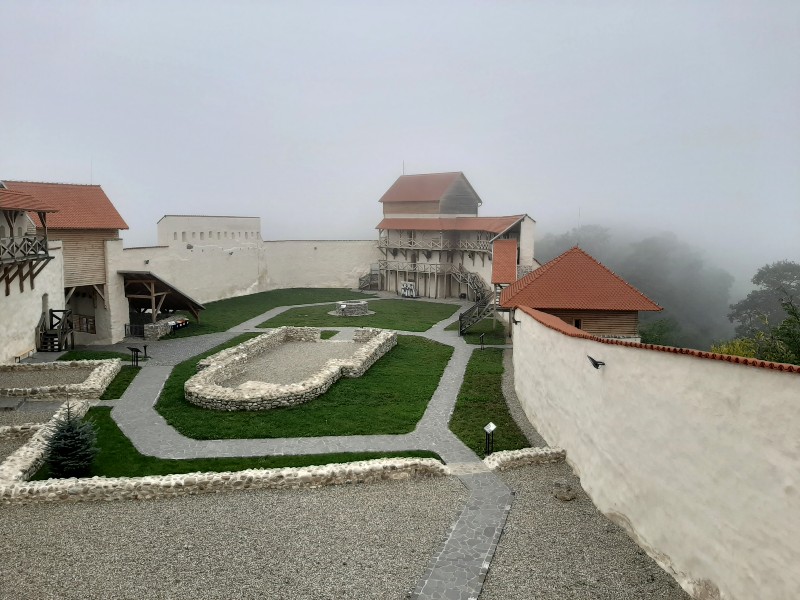




Conclusion
If you are driving by car between Brasov and destinations north such as Sighisoara, Feldioara makes for a pleasant stop.
Although the fortifications of Feldioara’s fortified church aren’t as impressive as those in neighbouring Prejmer and Harman, the church itself is massive and worth a visit.
Feldioara is also home to a historical fortress, although almost everything what you will see is a modern reconstruction from the 21st Century.
Personally, I thought it all felt rather too new and a bit fake, although opinions may differ here. Inside the fortress, there isn’t a great deal to see either.
If you were already planning to make a stop in Feldioara, by all means visit the fortress, as the entrance view isn’t expensive and the views are nice.
However, I wouldn’t go out of the way to visit it if you weren’t planning to stop in Feldioara, as in the direct environment of Brasov County there are much nore impressive fortresses, castles and ruins to admire.
How to reach Feldioara?
Feldioara is easiest to visit by car, as the town is located directly on the main DN13 provincial road which links Brasov with Rupea, Sighisoara and Targu Mures up north.
By public transport, the train is your best option. Feldiroara’s railway station is located just outside of town and slow trains linking Brasov with Sighisoara and Mediaș stop here.
Trip report index
This article is part of the ‘Visiting the Saxon Fortified Churches of Transylvania‘ trip report, which consists of the following chapters:
1. The Fortified Church of Harman (Honigberg), Brasov County
2. The Fortified Church of Prejmer (Tartlau), Brasov County
3. The Fortified Church of Feldioara (Marienburg), Brasov County (current chapter)
4. A Visit to Rupea Fortress
5. The Fortified Church of Homorod (Hamruden), Brasov County
6. Racoș: Exploring an Extinct Volcano and Abandoned Castle
7. In the Footsteps of King Charles: A Visit to Viscri, Romania
8. A Visit to the Fortified Church of Viscri, Brasov County
9. A Night Walk Around the Citadel and Old Town of Sighisoara
10. Review: Hotel Casa Wagner, Sighisoara, Romania
11. The Fortified Church of Saschiz (Keisd), Mureș County
12. The Fortified Church of Cloasterf (Klosdorf), Mureș County
13. The Fortified Church of Mesendorf (Meschendorf), Brasov County
14. The Fortified Church of Crit (Deutsch-Kreuz), Brasov County
15. The Fortified Church of Biertan (Birthälm), Sibiu County
16. The Fortified Church of Hosman (Holzmengen), Sibiu County
17. Review: Brukenthal Palace Hotel, Avrig
18. A Visit to Sambata de Sus and the Brancoveanu Monastery
19. Into the Carpathians: A Beautiful Drive to Moieciu de Sus

